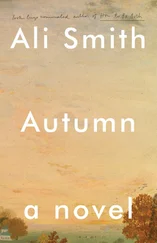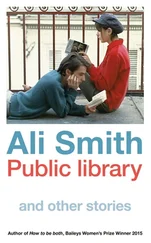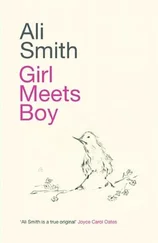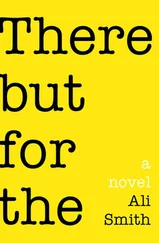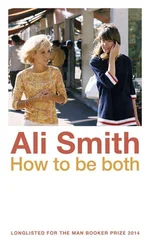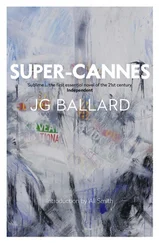Carson is always asking questions of form, with everything he writes. His novels are collections of stories; his realities are all fiction-driven, his fictions and his poetry are as attached to reality and politics as it’s possible for anything to be. His forms are creative fusions that stir up the possibilities of form. Here it’s as if he’s found the essence of form itself — it can generate dimensionality out of nothing, out of repetition, out of fusion, even out of its own barrenness like Stevens’s jarring jar. It sorts the shape from the shapeless — not that the shapeless doesn’t have form too, it does, because nothing doesn’t. Even formlessness has form.
And it suggests this truth about the place where aesthetic form meets the human mind. For even if we were to find ourselves homeless, in a strange land, with nothing of ourselves left — say we lost everything — we’d still have another kind of home, in aesthetic form itself, in the familiarity, the unchanging assurance that a known rhythm, a recognized line, the familiar shape of a story, a tune, a line or phrase or sentence gives us every time, even long after we’ve forgotten we even know it. I placed a jar in Tennessee. Once we know it, we’ll never not know it. Rough winds do shake the darling buds of May. They always will. Rhythm itself is a kind of form and, regardless of whether it’s poetry or prose, it becomes a kind of dwelling place for us.
In its apparent fixity, form is all about change. In its fixity, form is all about the relationship of change to continuance, even when the continuance is itself precarious — here, for instance, this fragility and its opposite sureness are evident in the form, the diminishing line-length, and the thematic preoccupation of Wisława Szymborska’s six-line poem (translated by Cavanagh and Bara´nczak), called, simply, Vermeer:
So long as that woman from the Rijksmuseum
in painted quiet and concentration
keeps pouring milk day after day
from the pitcher to the bowl
the World hasn’t earned
the world’s end.
2: Putting the Form in Transformation
These headings of yours for the different sections of your talks moved me. They were very like you. They were corny, a bit tentative, a bit bullish; they were kind of awful and it was as if they knew this about themselves and were vulnerable to it. The fact that you had capitalized the words the and in, in Putting The Form In Transformation, made me feel both vulnerable for you and proud of you.
I was reading your On Form talk: well, I was glancing at its start. One of us had brought it to Brighton with us: me, of course. You, lying next to me now in your dark sleeping form, didn’t exist, weren’t there. The pages of On Form had been there, though, under my copy of Oliver Twist and the stolen books from the charity shop, next to the hotel bedside light on my side of the bed when I switched it on. 4:30 am and I was awake: again, much like life used to be, me waking in the middle of the night to you angsting about something you hadn’t finished. Calm down, I said once. Go and do a line of Shakespeare. I actually made you laugh with that. I think you even put it into one of your lectures. Maybe it was in this one.
I flicked the pages. My eye caught on the word heart. It was in a quote: Alas, the heart is not a metaphor — or not only a metaphor. That was good. I liked that. That was true. It was someone called Elizabeth Hardwick, from page 91 of a book that had the word Sleepless in the title. When I was a child and we’d been given an American reading system at school for learning grammar, a system where you were assigned a color to let you know your place in the class, i.e., the people doing Orange were near the bottom and were doing the easiest level and the people doing Aqua, Silver, and Gold were right up at the top doing the most difficult (as if to make hierarchy more bearable — as if we didn’t know exactly what it meant, to be Orange), the teacher gave us the plasticized sheets to work from without ever telling us anything out loud about them, which meant that for a couple of years I thought that metaphor was pronounced with the stress on the a, like the word metabolism, and that the word simile was pronounced to rhyme with smile.
There were always questions on the backs of the plasticized sheets, I remember, about similes and metaphors in the extracts printed on the fronts of them. I never knew I’d grow up to marry someone whose stock-in-trade would be simile and metaphor. I never knew I’d grow up to marry anyone.
Simile, though your heart is breaking. It was Charlie Chaplin who wrote that tune, I remembered. Then the moment in Modern Times where he plays a workman who gets stuck in the mechanics of the machine he works on came into my head — not the moment of his being stuck in there, but the moment when, after he’s freed himself from the machine, it’s as if he’s broken free from himself too; he does a dance with two spanners held up to his head like antlers, like he’s gone lust-mad and being freed from the machine has changed him into a mad mythical creature, a faun, a Pan, like in classical paintings.
So, was metaphor about form, and was simile? How? I glanced down the page. The copula of metaphor. That sounded interesting. It sounded sexy. Funny to think: I’d known that simile involved like, but I hadn’t ever thought that metaphor might involve love. My heart is like a singing bird…My heart is like an apple-tree…Because my love is come to me. So simile maybe involved love too. Well, he or she was lucky, having a heart like an apple tree. Even a broken apple tree will know what to do, with a bit of help, to right itself and have its fruit again. Even after the worst storm damage, a tree, so long as there’s some green in the break, can be healed and mended and carry on growing. Unless, that is, the heart was like one of the literally thousands of kinds of apple tree that have disappeared from the British Isles in reasonably recent history because of the way the supermarkets only really like to sell about five kinds of apple.
That would be something: to have a heart whose tree produced a fruit that had otherwise died out. I saw that there was a lot about trees in this section. I wondered if, when you’d been writing it — with me in the next room probably reading the paper or watching the news, anyway with no idea you were writing these exact words I was reading now — if when you’d got to this bit about trees you’d thought at all about me and my daily job, my own stock-in-trade. There was a description here of a woman who turns into a tree when she doesn’t want to sleep with a god, and another of an ancient couple who get turned into trees so that they’ll always be together, they’ll never have to die. That was beautiful. It was from Ovid. I would find that Ovid book when I got home and read it. It would be the book I’d read next, after I’d finished Oliver Twist. If I ever finished Oliver Twist.
I started reading the bit about Ezra Pound. I was amazed, actually, to find Ezra Pound in your talk, because I remembered you telling me that he was an anti-Semitic old fascist and had been put in a cage for it. But here he was: there was a quote from a poem of his: I stood still and was a tree amid the wood, / Knowing the truth of things unseen before , and then there was a long quote:
The first myths arose when a man walked sheer into ‘nonsense,’ that is to say, when some very vivid and undeniable adventure befell him, and he told someone else who called him a liar. Thereupon, after bitter experience, perceiving that no one could understand what he meant when he said that he ‘turned into a tree,’ he made a myth — a work of art that is — an impersonal and objective story woven out of his own emotion, as the nearest equation that he was capable of putting into words. That story, perhaps, then gave rise to a weaker copy of his emotion in others.
Читать дальше

